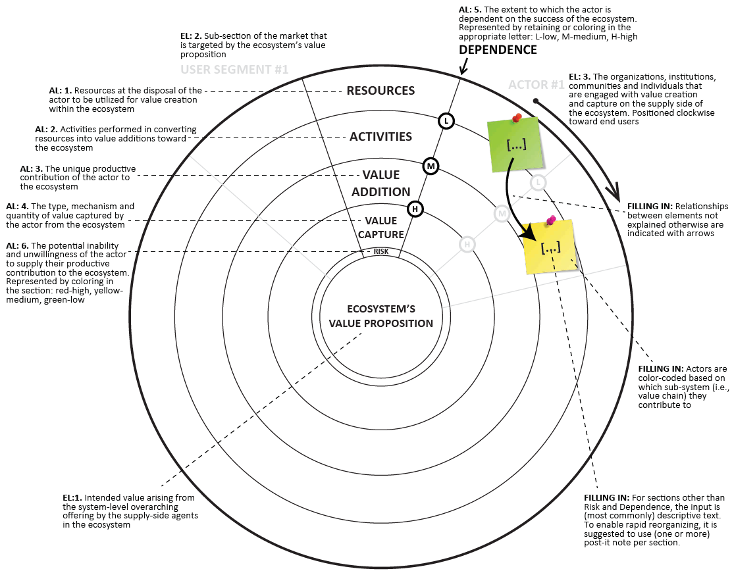The problem
All businesses need a clear value proposition that states why their product or service is better than their competitors’ and delivers value to a customer. However, in today’s world, businesses are increasingly specialised, and a single company will typically not have the resources to deliver a complex value proposition from start to finish.
This is particularly the case with businesses developing and commercialising new technology. Here, an entrepreneur will often need to rely on other businesses and organisations to supply a range of complementary products or services that enable them to ultimately deliver a product of value to their customers. We call this set of actors involved in achieving a complex value proposition, an ‘innovation ecosystem’.
Authors

Madis Talmar
Madis Talmar is an Assistant Professor of Entrepreneurship & Innovation at Eindhoven University of Technology and a consultant for innovation programmes in energy corporations. His research interests include innovation ecosystems, design science, and organisation design, with focus on (innovation) management in the field of energy. He has published over 35 articles in practitioner-orientated management journals and consulted organisations of both public and private origin. Academically, he has published in the journals Long Range Planning, Technological Forecasting and Social Change, and Journal of Cleaner Production.

Bob Walrave
Bob Walrave is an Associate Professor of Modelling Innovation Systems at Eindhoven University of Technology. He holds an MSc in Industrial Engineering (cum laude) and a PhD from the same university. His main research interests are centred on strategic decision-making in dynamically complex situations in the context of innovation management. In particular, he is interested in the management of innovation processes within and across public and private organisations. His work has been published by journals such as the Journal of Management Studies, Research Policy, Long Range Planning, R&D Management, Industrial and Corporate Change, Technological Forecasting & Social Change, and several other journals, as well as chapters in books.

Ksenia Podoynitsyna
Ksenia Podoynitsyna is an Associate Professor of Data-Driven Entrepreneurship at JADS, the Joint Graduate School of Tilburg University and Eindhoven University of Technology. Her research focuses on business model and ecosystem innovations triggered by sustainability transitions and big data. Ksenia has published in the Journal of Business Venturing, Journal of Product Innovation Management, Entrepreneurship Theory and Practice, and California Management Review among others.

Jan Holmström
Jan Holmström is Professor of Operations Management at Aalto University. His research focuses on technology-enabled operational innovations and developing explorative design science as a research methodology for the field of operations and supply chain management. Jan has been among the first academic researchers to tackle practical problems such as last mile logistics for web retailing, merging physical and digital control of material flows, and the use of 3D printing for on-demand spare parts provision. He has published in journals such as Journal of Operations Management, Decision Sciences, Computers in Industry, and Communications of the ACM.

Georges Romme
Georges Romme is Professor of Entrepreneurship & Innovation at Eindhoven University of Technology. His scholarly work focuses on organisation design, technology entrepreneurship, innovation ecosystems and organisational learning. Georges has been one of the original pioneers who brought the design sciences to the field of management and entrepreneurship, for which he received several awards, such as the Distinguished Scholar-Practitioner Award of the Academy of Management. His publications have appeared in many journals, including Organization Science, SMJ, Organization Studies, JPIM, Research Policy and other outlets. His monograph The Quest for Professionalism (Oxford University Press) received EURAM’s 2017 Best Book Award as well as the 2017 Responsible Research in Management Award.
Keywords
Innovation, Ecosystem, Innovation Risk, Value Proposition, Technology Entrepreneurship
Target Audience
Business developers, new venture teams, R&D managers, CEOs, investors, entrepreneurs
Industries Researched
Energy, Automotive, Hightech
First Publication
2019



